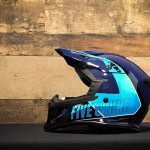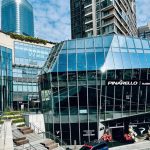Bikes Belong is leading the way toward the next generation of bike lanes with the Green Lane Project. The Green Lane Project, launched in late May this year, is working with Austin, Chicago, Memphis, Portland, OR, San Francisco, and Washington, DC to support each city’s development of world-class protected bicycling networks, called green lanes, during the next two years.
Green lanes are safe, comfortable spaces for people on bikes on city streets. They are protected from motor vehicles by curbs, planters, posts, or parked cars. A green lane is an invitation to ride to a whole new range of people who otherwise wouldn’t feel comfortable biking on busy city streets. Green lanes address this fundamental and common concern about safety by creating dedicated spaces and low-stress routes for almost anyone.
“Green lanes benefit everyone, not just those people riding bikes today,” said project director Martha Roskowski. “They’re inexpensive to build, they make traveling in the city less stressful for people in cars and on foot as well as on bikes, and they are attractive to innovative businesses that are moving into urban areas.”
The Green Lane Project serves as a catalyst, convener, collaborator, and communicator, facilitating the spread of knowledge and best practices among U.S. cities. So far this year, the Project has hosted workshops in Minneapolis and Denmark for city officials to share ideas and draw inspiration from some of the most advanced bicycling cities in the world. Additional workshops are being held in the Netherlands and New York this fall.
“The thinking about urban bicycling is evolving very rapidly, so city leaders are eager to share ideas and learn from one another,” said Roskowski. “The Green Lane Project creates a direct peer-to-peer conversation. This will help cities transform their streets faster, better, and smarter than if they were working on their own.”
The Project’s newly launched, dedicated website (greenlaneproject.org) provides updates on the progress in the six focus cities and beyond and offers resources and inspiration from around the world. The Project also released its first printed resource this summer, a guide that helps cities build support for innovative bike facilities by sharing key communications lessons learned by other U.S. cities. The 57-page guide, entitled “Explain Your Lane,” shows examples and best practices for communications and outreach that can be used before, during
and after green lane projects.
This fall, the Green Lane Project will work with Portland State University (OR) on a research project to study corridors in each of the six cities, looking at ridership, safety, and the economic
impact of investments in green lanes.
What's new in the Green Lane Project focus cities?
- Austin, TX opened a new two-way green lane on Rio Grande Avenue in April and will complete green lane projects this fall on Barton Springs Road, serving the city’s beloved pool, and on Bluebonnet, connecting to an elementary school.
- Chicago, IL has installed five miles of new protected lanes so far this year with plans to complete nearly 30 miles more by year-end. Mayor Rahm Emanuel has pledged to make Chicago “the bike friendliest city in the country.”
- Memphis, TN is entering final design for the Broad-Overton connector, which will be the first green lane in the city. Memphis has built 35 miles of new bike lanes in the last year.
- Portland, OR is designing a green lane on NE Multnomah in conjunction with redevelopment of the area, adding to a growing network that includes several innovative green lane projects.
- San Francisco, CA opened a new green lane on JFK Drive through Golden Gate Park – a popular route for families and visitors – in early summer. Additional green lane pilot projects are being explored on Polk, 2nd, and the Embarcadero.
- Washington, DC is completing a green lane design on L Street NW and starting on M Street NW. A recently completed study of green lanes on Pennsylvania and 15th Street NW showed significant increases in ridership and encouraging safety results. Neighbors, drivers, and pedestrians all see benefits from the lanes as well.















